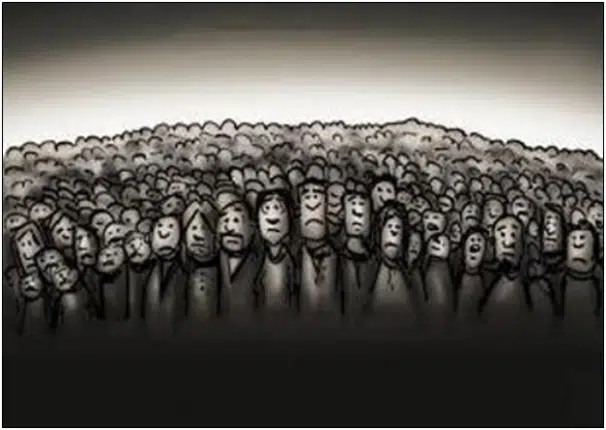
Republicans railed against the Obama Administration’s proposal to take in more than $1 trillion in new debt every year for the next ten years, when by 2021, the national debt will total more than $26 trillion, and the budget balloons to $5.7 trillion.
Yet, when the time came to put their own budget on the table, the best House Republicans could produce was a proposal by Budget Committee Chairman Paul Ryan where the debt still spirals up to $23 trillion, and the budget to $4.7 trillion. The annual deficit would only be cut to $391 billion by 2021.
But why?
Why didn’t Republicans put a balanced budget on the table? Why did they only put a proposal out there that merely reduces the debt as a percent of the Gross Domestic Product (GDP)? Why not pay down the national debt?
In the end, Republicans were only able to cut 2011 outlays by $352 million in the continuing resolution debate, and 2012 outlays by $21 billion in debt ceiling fight — a cut of less than 1 percent. That might be explained politically that without the White House and Senate, this was the best deal House Speaker John Boehner could get. Perhaps so.
But it doesn’t explain why their initial proposal was so anemic, or why the House Republicans quickly abandoned the tea party “Cut, Cap, and Balance” plan under pressure from within their own party. Those remain disappointments with the very voters who just delivered Republicans to the majority.
Under the House budget plan, if interest rates were to normalize at 5 percent — gross interest owed on the debt would rise to $1.1 trillion a year in 2021. This compares to the Obama proposal where annual interest payments would rise to $1.3 trillion. Not much of a difference.
So, what gives? A recent CNN poll found 74 percent of voters support a Balanced Budget Amendment. With broad support for such far-reaching fiscal reforms, why are Republican proposals so modest?
To answer that, we need to step back a moment and consider the collapse of the gold standard, what U.S. debt has become in the post-gold system, and how that debt now functions in the global financial system.
In the post-Bretton Woods monetary system created by Richard Nixon 40 years ago, the gold standard was completely abandoned, freeing up the government to expand the money supply, borrow more freely, and ratchet up spending. It was the advent of the nation’s fiat currency — backed by nothing more than the word of politicians.
Under the new system, credit expansion by government — and not any hard reserves — is the primary mechanism by which new dollars are created. It is a debt standard.
So, what is the U.S. debt? It is a promise that taxpayers will pay, at a future time, principal and interest owed on government spending that has been moved forward in time. As its creation increases the money supply, it is inflationary. The job of the Federal Reserve is to “control” this inflation but not to stop it. That, of course, explains why the value of the dollar has lost 95 percent since the enactment of the Federal Reserve Act.
Conversely, under the fiat system, without new borrowing by the government every year, the money supply would contract, having the opposite effect — deflation. That would push asset prices down, and cause financial institutions in particular to feel the pain in the form of massive write-downs on their holdings. Why?
Dubbed “risk-free” under international financial regulations like Basel III, U.S. treasuries and other sovereign debt are the primary assets used by financial institutions all over the world to leverage their balance sheets. Rolling back sovereign debt therefore would result in deleveraging, the slow and painful process of repayment.
In other words, if the budget was balanced, the nation’s creditors — for the most part the financial elites, the so-called Masters of the Universe — would lose their cash cow. And their shirts. The entire structure of the global financial system depends on the perpetual expansion of U.S. debt.
This is what it means to have the world’s reserve currency.
The implications are sobering. This system is rigged so that government always gets bigger by requiring our representatives to always run a deficit. So, with this in mind, it is understandable why there is always a new entitlement to pass, a program to do this or that, or a real war to fight. There is always a need to spend. Under this regime, the American people are forced to go deeper in the red every year — becoming debt slaves to the entire world.
Meanwhile, the debt is doing nothing to grow the economy. Instead, its poisonous effects are being felt, with unemployment hovering above 9 percent and growth sluggish at a little more than 1 percent. Studies by the Bank of International Settlements and Carmen M. Reinhart of the University of Maryland and Kenneth S. Rogoff of Harvard University show that at given levels of public debt, growth is hurt and eventually killed. Very soon this obvious economic truth could lead America and the world into another recession.
And, within a few months, America’s national debt will be larger than the entire economy and growing until one day soon it will become laughable to even think it will ever be repaid.
Regardless of the party in power, nobody should expect much in the way of fiscal reform out of Washington, D.C. until the fiat currency system is significantly reformed or possibly replaced. We are on a ruinous debt standard, which is making it impractical if not impossible to get our fiscal house in order. It’s time to look for a more responsible way.
Bill Wilson is the President of Americans for Limited Government. You can follow Bill on Twitter at @BillWilsonALG.







